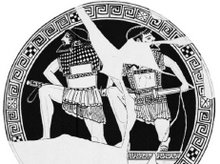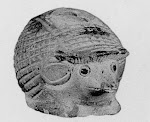"Prediction of human crowd pressures"
Accident Analysis and Prevention 38 (2006) 712–722
Ris S.C. Lee, Roger L. Hughes
In situations where pedestrians are crushed, the density of the crowd is extremely high and the physical movement of pedestrians is almost impossible. When crushing occurs, the high pressures developed within the crowd, which can bend steel barriers or push down brick walls, can be unbearable to some members of the crowd, producing fatalities from asphyxiation while still standing. Generally, the highest pressures are felt by those pedestrians near any barrier that is checking the advance of the crowd. Such pressures will gradually restrict these people from breathing. Each time a breath is exhaled the weight of the load restricts inhalation of the next breath. A slow death caused by suffocation usually follows, unless rescue is immediate. The internal pressure in a crowd on the time scale of a minute or so is thus the critical criterion for determining the likelihood of an accident involving crushing in the crowd. Tests on live subjects conducted by Evans and Hayden (1971) found that the tolerable force was typically 623N for men when pushed against a 100mm wide flat bar. This force increased to typically 800N when the subject was allowed to push against the bar to reduce loading on his rib cage. For women, Evans and Hayden (1971) reported the tolerance levelwas significantly less. Apart from Evans and Hayden (1971), studies on exploring the magnitude of loadings that could cause crush asphyxia found that death was estimated to have occurred 15 seconds after a load of 6227 N and 4–6 min after 1112 N was applied, see Hopkins et al. (1993). It should be noted that loadings of such as these magnitudes are affected by various factors including age, gender and anatomical build.
From the paper we can see the crushing force generated by the crowd at a rock concert over time (the lighter plot is a prediction, ignore it).

The amount of pressure that is fatal to a human varies depending on the duration, since the asphyxiation can occur over time as described above. Very high pressure (6000+ N) can be almost immediately lethal. From the plot above we can see that over the time period of recording from 5-10 minutes, the crowd pressure was almost never below 800N and reached a peak of 1,500N. Since 623-800N were described as a tolerable limit above, and pressures of 1112N lethal, this crowd would have been intolerable and potentially lethal for most of the period. In the concert many people had to be passed out of the crowd and treated by medical professionals.
From another paper:
“Experiments to investigate the level of ‘comfortable’
loads for people against crush barriers”
R.A. Smith*, L.B. Lim
Safety Science 18 (1995) 329-335
The same authors measured loads at several ‘pop concerts’, where at one they measured
instantaneous peak values of up to 4.2 kN/m, 30-second average values up to 1.8 kN/m
and sustained loadings of typically 1.5 kN/m lasting for 10 minutes. Throughout the first half of an act the sustained average load was 0.8 to 1 kN/m. During the concert, people pressed against the barriers and in distress were rescued by being pulled over the barriers and being treated by medical staff.
This paper had an interesting figure that showed how the pushing force could vary with the degree to which men leaned forward against the man ahead. How this would correlate with forces that hoplite would generate is not really known, but the important thing is to note that the behavior of the men in the crowd can alter the amount of pressure generated. As few as 4-8 men are producing lethal pressures (note the scale of the y-axis is Kilonewtons (1,000N). This data is not even from an especially dense crowd, they can be almost double that density and proportionally more deadly.

The importance of this graph is that it shows that through behavior the amount of force generated by a crowd can be increased. Here simply leaning forward more transmits more force forward. The implication is that through training men can transfer greater force forward more efficiently. This, and other behaviors, is how the system can be tweeked to produce more with training.



